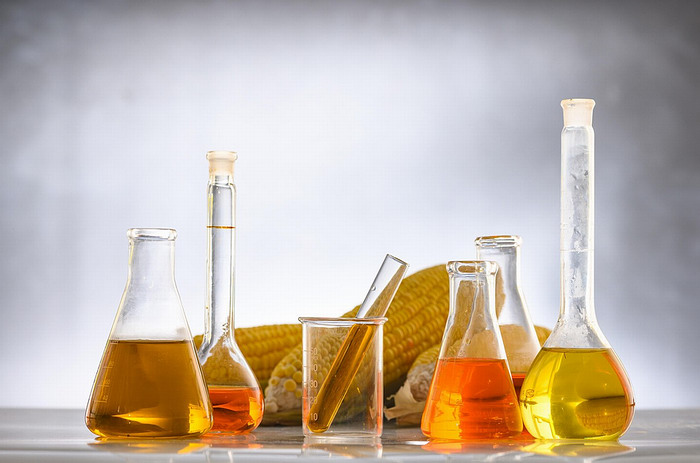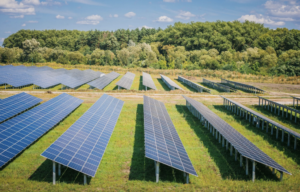How Lab Equipment Fuels Renewable Progress

The transition to renewable energy is one of the defining challenges of our time. Yet the vast wind farms, solar arrays, and biofuel plants we see today all trace their origins back to the precision of a laboratory. It is in these controlled environments, where test tubes, centrifuges, photobioreactors, and spectrometers operate, that breakthroughs are made possible. Laboratory equipment is not simply supporting research; it is quietly fuelling the innovation that will drive the renewable future.
Accelerating Material and Catalysis Research
One of the central goals of renewable energy research is to make systems more efficient and affordable. Whether it’s solar panels that convert more sunlight into electricity or wind turbine blades that withstand decades of wear, progress often depends on discovering new materials.
Laboratory equipment enables researchers to experiment at the molecular level. Precision balances, hot plates, and controlled reaction vessels allow scientists to create new alloys, coatings, and catalysts. Spectroscopy tools then measure their efficiency under varying conditions. Even a tiny improvement in energy conversion or durability, say, a one per cent boost in solar efficiency, can represent millions of pounds in added value when applied at scale. Without the precision of lab tools, these incremental but critical advances would not be possible.
Powering Bioenergy Breakthroughs
Biofuels, derived from organic material such as algae or agricultural waste, remain one of the most promising avenues for renewable energy. However, producing them at scale requires years of laboratory refinement.
Photobioreactors and controlled cultivation chambers allow scientists to grow algae in ideal conditions, regulating light exposure, nutrient content, and gas exchange. Laboratory centrifuges and filtration systems then help separate and refine bio-oils for testing. Each stage, from cultivation to processing, relies on reliable equipment to deliver consistent results. Without these technologies, bioenergy would remain a theory rather than a viable contributor to the renewable mix.
Simulating Renewable Systems Before Deployment
Building a wind farm or hydrogen production plant without rigorous lab testing would be unthinkable. Laboratory-scale simulations provide a safe and cost-effective way to model how renewable technologies will behave in the real world.
For example, small turbine prototypes can be tested in wind tunnels, while hydrogen fuel cells are put under controlled stress conditions to measure performance and degradation. Grid simulators in labs allow engineers to study how renewable systems interact with existing infrastructure, preventing costly errors in large-scale deployment.
Through this process, lab equipment becomes the first line of defence against inefficiency, underperformance, or failure in renewable projects.
Validating New Technologies for Urban Environments
Not all renewable projects are destined for remote landscapes. Increasingly, technology is being adapted for city use, whether it’s compact wind turbines on rooftops, solar façades on buildings, or advanced energy storage systems in urban grids.
In laboratories, these innovations are subjected to rigorous testing. Material stress tests ensure they can withstand the challenges of weathering, while controlled simulations evaluate safety and noise levels. This ensures that renewables designed for populated areas are efficient, sustainable, and socially acceptable before they are rolled out.
The Unsung Role of Quality Lab Supplies
Behind the headlines of renewable breakthroughs lies the unglamorous yet vital role of laboratory supplies. Glassware, safety cabinets, fume hoods, and precision instruments all ensure that experiments can be carried out safely and consistently.
The reliability of these supplies directly impacts the accuracy of findings. A poorly calibrated piece of equipment can derail years of research, while dependable tools can accelerate discovery. That’s why researchers rely on trusted providers such as https://www.oconchemicals.ie/, who deliver high-quality laboratory equipment and supplies to keep the engines of innovation running smoothly. Their role may not be in the spotlight, but it is foundational to renewable progress.
Scaling Up: From Lab Bench to Pilot Plant
Even when a breakthrough is achieved, the journey is only beginning. Laboratory results must be scaled into pilot plants to prove their viability in real-world settings. This transition is complex because what works at a small scale may not perform identically when scaled up.
Here again, lab equipment plays a vital role. Reliable measurements and consistent testing at the lab stage reduce the risks of scaling, ensuring that processes translate smoothly and efficiently. Pilot plants then validate these innovations further before they are rolled out commercially. The lab is not just a starting point; it is a bridge to large-scale applications.
Building a Future of Continuous Innovation
Renewable energy is not a field of one-off discoveries. Rather, it’s a sector of continuous improvement. Each year, researchers refine solar cells, enhance wind turbine efficiency, create safer storage methods, and reduce the environmental footprint of biofuels.
Every one of these steps relies on the quiet, tireless work of laboratory equipment. From chemical analysis and material testing to safety monitoring and data collection, lab tools are the backbone of progress.







